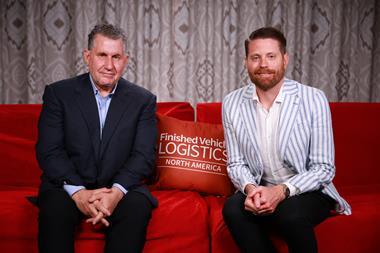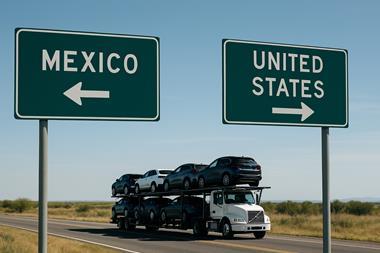
Finding an agreement on automotive trade will be difficult because of the different standards and regulations governing areas such as safety and emissions, but since components are often shipped across the Atlantic several times before they end up in a car, which may then itself be shipped once more – each time subject to tariff charges – the effort promises rewards.
Trade representatives will discuss whether tariffs on vehicles and parts should be lowered immediately or, as with the EU-South Korea FTA, gradually over a number of years to allow domestic industries to adapt to further competition from imports. The aim, regardless of which, is zero tariffs.
However, Benjamin Hartford at analysts Robert W Baird says the removal of tariffs on automotive trade between the two economies will have minimal impact. “Production of vehicles has become more localised in recent years to minimise the transactional currency impacts,” he said, adding that very few US-manufactured vehicles are exported to the EU. “A few EU high-end luxury models are shipped to the US and certain high-value, internally sourced components, such as engines, transmissions, and transfer cases, are shipped between the US and EU,” he admitted, stating that the new deal could affect their movement. “But it seems unusual that procurement decisions would be meaningfully affected by changes in tariffs alone.”
There are, however, wider implications for the agreement on safety and environmental standards, which include cost to the carmaker. EU Trade Commissioner Karel De Gucht estimated that barriers such as the safety standards imposed on EU imports by the US were equivalent to a traditional tariff of 10-20%. “Safety is a top priority on both sides of the Atlantic, but how cars achieve their respective safety standards is different and it means the car needs to be tested twice, on each side,” s aid Helene Banner, spokesperson for EU Trade Policy in the office of De Gucht. “The aim of the deal is to get rid of this so when it has been tested in Europe, as soon as it arrives at US customs, it can go through without further waiting time or approvals to be made, which cost companies money.”
Different regulatory institutions on either side make the testing more complicated than tariff negotiation. The US has the National Highway Traffic Safety Administration for instance, while the EU has the European Road Safety Federation. “Both sides of the Atlantic have the aim of producing safe cars but the way they impose the standards to make them safe is different,” said Banner. “They don’t work together and now we need to make them work together on an institutional process.”
The aim is to get an agreement on mutually accepted existing standards, which itself will mean a great deal of technical discussion and is part of the reason De Gucht said he expected the negotiations to be difficult and complex.
Safety raises questions about the technology mandates behind developments, according to Frost & Sullivan’s industry analyst for Automot ive & Transportation, Prana Natarajan. The US will require advanced driver assistance features as standard over the next few years, but a greater number of suppliers of this technology are based in Europe. “This is precisely the reason why European safety system suppliers are an integral part of the American automotive value chain,” s a id Natarajan. “The US stands a great chance of tapping the potential of advanced technologies developed by European suppliers in making their vehicles safer. In a nutshell, there is neither threat nor any great challenge in terms of safety for bilateral trade.”
Discussions on the standards for these safety measures will include technology such as that concerning electric vehicles (EVs). Banner used the example of the plug used to charge an EV. “The aim of the agreement would be to make this plug the same in the US and the EU, and with a view to it being a technology for the coming decades, perhaps it could become the world standard,” she s a id . Adapting such a standard would allow both US and EU companies to export worldwide without having to adapt the vehicles.
The European Commission is currently drafting a mandate on standards for EU member states to approve and adopt. The EU Trade department is also about to publish an independent impact study on the different industry sectors, including automotive, that will look at the different scenarios attendant on the negotiations, such as what the economic impact would be of only certain specific standards being agreed upon at the cost of others.
Look out for coverage of the impact study and mandate in the next edition of Automotive Logistics magazine.


































